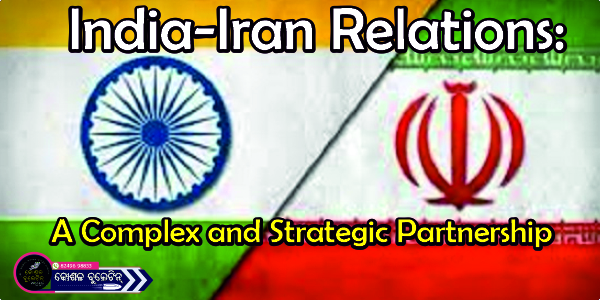India and Iran share a deep historical and cultural relationship spanning millennia, rooted in linguistic, cultural, and trade ties through ancient civilizations like the Indus Valley and Persia. Diplomatic relations were formally established on March 15, 1950, but their shared border until 1947 and historical exchanges via the Silk Route fostered robust connections.Historical Context and Evolution
The relationship has seen ups and downs. During the Cold War, ties were strained due to India’s non-aligned stance and close Soviet links, while Iran aligned with the Western Bloc under the Shah. The 1979 Islamic Revolution briefly improved relations, but Iran’s support for Pakistan in the India-Pakistan conflict and India’s ties with Iraq during the Iran-Iraq War caused friction. Post-Cold War, mutual interests in energy, security, and regional stability brought the two closer. Key milestones include the 2001 Tehran Declaration, the 2003 New Delhi Declaration, and Prime Minister Narendra Modi’s 2016 visit, which led to 12 MoUs and the Chabahar Port agreement.Current Dynamics
Today, India-Iran relations focus on trade, energy, connectivity, and security. Major Indian exports to Iran include rice, pharmaceuticals, and machinery, while India imports dry fruits, chemicals, and glassware. The Chabahar Port, a strategic project, allows India to bypass Pakistan for trade with Afghanistan and Central Asia via the International North-South Transport Corridor (INSTC). However, U.S. sanctions, especially after the 2017 withdrawal from the Iran nuclear deal, halted India’s oil imports from Iran in 2019, impacting energy security. Recent bilateral deals signed in May 2025 on trade, customs, and healthcare signal efforts to revive economic ties.Geopolitical Challenges
India balances its ties with Iran against relations with the U.S., Israel, and Gulf states like Saudi Arabia and the UAE, which are key trade partners. Iran’s growing ties with China, including a 25-year strategic partnership, and its criticism of India’s 2019 abrogation of Article 370 in Kashmir have caused tensions. In 2024, Iran’s Supreme Leader Ali Khamenei’s remarks on Muslim “suffering” in India drew a sharp rebuke from New Delhi. India’s vote against Iran at the IAEA in 2005 also surprised Tehran. Conversely, India’s support for Iran’s inclusion in BRICS and SCO in 2023 reflects continued engagement.Recent Developments
High-level engagements continue, with Modi meeting Iran’s President Masoud Pezeshkian at the 2024 BRICS Summit and Foreign Ministers Jaishankar and Abbas Araghchi co-chairing the 20th India-Iran Joint Commission in May 2025. India’s Operation Sindhu in June 2025 evacuated 110 Indian students from Iran amid regional tensions, showcasing cooperation. Iran’s 15-day visa-free policy for Indian tourists, announced in 2024, aims to boost people-to-people ties.Strategic Importance
Iran’s geographic position is critical for India’s access to Central Asia and Afghanistan, while India offers Iran a vast market and a counterbalance to Western sanctions. Despite challenges like U.S. sanctions and differing regional alignments, both nations leverage their historical ties to navigate geopolitical complexities. The relationship remains vital for India’s energy security, regional influence, and connectivity ambitions, though it requires careful balancing with other global partnerships.Conclusion
India-Iran relations are marked by a blend of historical affinity, strategic convergence, and geopolitical challenges. While issues like sanctions and differing alliances pose hurdles, ongoing high-level dialogues and projects like Chabahar underscore their commitment to a mutually beneficial partnership. Both nations continue to explore opportunities to strengthen ties in trade, culture, and security amidst a volatile regional landscape.




